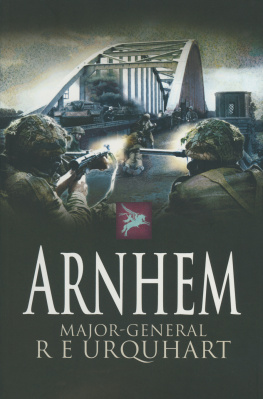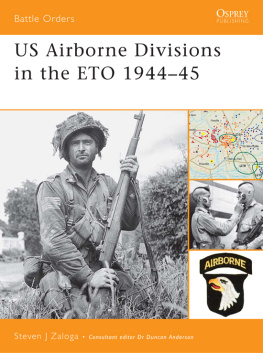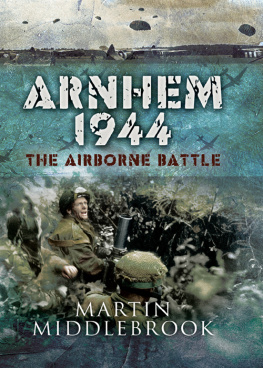Sliz - Glider Pilots during Operation Berlin
Here you can read online Sliz - Glider Pilots during Operation Berlin full text of the book (entire story) in english for free. Download pdf and epub, get meaning, cover and reviews about this ebook. year: 2015, genre: History. Description of the work, (preface) as well as reviews are available. Best literature library LitArk.com created for fans of good reading and offers a wide selection of genres:
Romance novel
Science fiction
Adventure
Detective
Science
History
Home and family
Prose
Art
Politics
Computer
Non-fiction
Religion
Business
Children
Humor
Choose a favorite category and find really read worthwhile books. Enjoy immersion in the world of imagination, feel the emotions of the characters or learn something new for yourself, make an fascinating discovery.
Glider Pilots during Operation Berlin: summary, description and annotation
We offer to read an annotation, description, summary or preface (depends on what the author of the book "Glider Pilots during Operation Berlin" wrote himself). If you haven't found the necessary information about the book — write in the comments, we will try to find it.
Sliz: author's other books
Who wrote Glider Pilots during Operation Berlin? Find out the surname, the name of the author of the book and a list of all author's works by series.
Glider Pilots during Operation Berlin — read online for free the complete book (whole text) full work
Below is the text of the book, divided by pages. System saving the place of the last page read, allows you to conveniently read the book "Glider Pilots during Operation Berlin" online for free, without having to search again every time where you left off. Put a bookmark, and you can go to the page where you finished reading at any time.
Font size:
Interval:
Bookmark:
GliderPilots during Operation Berlin
2015 JohnSliz
Note: This article first appeared in the December 2014 issue of The Eagle
Glider Pilots duringOperation Berlin
The responsibility for planningthe details of Operation `Berlin fell upon the Chief Engineer of the 43rdWessex Division, Lieutenant-Colonel Henniker, who had only been with thedivision for just over a week. Previously he had been the Commander, RoyalEngineers for the British 1st Airborne Division, the unit that hewas now responsible for evacuating across the Rhine River. At his disposal werehis own divisions engineers and those under the 10th Army GroupRoyal Engineers, who had been tasked with bridging the Rhine River - ifnecessary - during Operation `Market Garden. Several scenarios had beenplanned for the assault across the river, but there was no plan for theevacuation of the British 1st Airborne Division. ThisLieutenant-Colonel Henniker had to come up with himself.
He knew that there had been a lotof action already on the river at Oosterbeek. The engineers of the Polish 1stIndependent Parachute Brigade had with varying results ferried members oftheir brigade across the Rhine River on two separate occasions. The first timewas with small two man Reconnaissance Boats and the second time was withAssault Boats. A witness to these events said, The less said about theirwatermanship the better. (Lieutenant-ColonelMyers) Still several hundred Polish troops were added to the OosterbeekPerimeter.
The next major event on the riverinvolved one of the 43rd Wessex Divisions infantry battalions, the 4thDorsets, as they were tasked with recapturing the Westerbouvwing Heights. This employedhis own divisions engineers using Assault Boats, but the Dorsets did notsucceed in recapturing the high ground. So when it came time to save as much asthe division as possible by pulling them out, Lieutenant-Colonel Henniker knewthat ferrying men across a wide and swift river wasnt as easy as peoplethought. In his memoir, `An Image of War, he stated: `The fact was,and still is, that watermanship in a wide and swift river is as much of a skillas cabinet-making or joinery. (p109 `An Image of War)
He explained in detail about howthe paddlers of the boats could very easily be carried a hundred yardsdownstream without them even realizing it. In a perimeter as small as theAirbornes, this could mean the difference between success and failure.
Beside the paddled boats and hisown division engineers, the Lieutenant-Colonel had at his disposal the fieldcompanies of the 10th Army Group Royal Engineers and a number ofpowered boats, which he believed would fare better on the river despite thenoise of their engines. To quote him again, They will do many more trips. (p109 `An Image of War)
He also knew the problems ofoperating two different types of crafts on the same river. The power boats andthe paddle boats must be kept separated to avoid collisions or even nearmisses, which would more than likely capsize the flimsy paddle boats. The typeof paddle boats used were Assault Boats Mark III and were operated by two ofthe 43rd Wessex Divisions engineering companies, the 260thField Company, Royal Engineers and the 553rd Field Company, RoyalEngineers. The type of power boats were Storm Boats Mark I and were operated bythe 20th Field Company, Royal Canadian Engineers and the 23rdField Company, Royal Canadian Engineers.
As the engineers prepared for theevacuation so did the Airborne. General Urquhart based his plan on theevacuation at Gallipoli where the units at the north end would move down to theriver first. It was to be like a collapsing bag. Glider pilots with theirknowledge of the area would act as guides. Major Winchester, the Commanding Officerof the 9th Field Company, Royal Engineers was ordered by the Generalto lay white tape along one of the routes of the withdraw personally, as heknew the route well. At 1900 hours he took three sappers with him and with themany rolls of tracing tape, they taped the complete route from near divisionalheadquarters to the ferrying site. It took them to 2100 hours to reach theriver. By then the men had already filtered down and shortly after the assaultBoats manned by the members of the 260th Field Company, RoyalEngineers started to ferry men across the river.
Meanwhile the other companymanning Assault Boats, the 553rd Field Company, Royal Engineers,wasnt having as good luck. Their crossing point was opposite of theWesterbouving Heights, which was believed to be in the hands of the Dorsets,but unbeknownst to Lieutenant-Colonel Henniker or anyone else on the southside of the river - it hadnt been recaptured. It was in German hands and thenumber of men evacuated from this area was only twenty-five, who were mostlyfrom the 4th Dorsets.
Shortly before they were due tolaunch their boats, the 20th Field Company, Royal Canadian Engineersreceived a report from the 553rd Field Company, Royal Engineers thatthere wasnt anyone to evacuate in this area so they didnt launch any of theirboats.
Meanwhile the members of the 260thField Company, Royal Engineers were busy ferrying troops. There were more menwaiting than they could handle. At first there were only sporadic machine gunand shelling, but then they heard the noise of the 23rd FieldCompany, Royal Canadian Engineers outboard engines. Unfortunately so did theGermans and soon the shelling increased. The first Storm Boat to be launchedreceived a direct hit and four Canadian engineers lost their lives. More StormBoats were launched and two more Canadians were killed. This time the crewmanaged to cross the river and pick up a boatload of wounded before a near misscapsized the boat.
One of the Assault Boats alsoreceived a direct hit. However, no members of the 260th Field Company wereseriously injured. In this boat were at least two glider pilots. Before theygot on board Sergeant David Hartley of the Glider Pilot Regiment stated thatStaff Sergeant Peter Hill was afraid to go into a boat because he couldntswim. Sergeant Hartley told him to stay with him, remove his boots and sit atthe edge of the boat. This they did and while the boat was on the river, amortar shell landed in the middle of the boat and they were flung into the water.Staff Sergeant Hill was helped into a floating position so that SergeantHartley could pull him to shore. At first Sergeant Hartley said that Peter wasusing his legs quite well and they soon got out of the boat crossing area inorder not to get hit by one of them. Then Peters legs started to lag and theywerent any closer to the shore. Unfortunately the current was too strong andthe shrapnel in Sergeant Hartleys shoulder didnt allow him to hang on. Sadly,Staff Sergeant Peter Hill drowned and was one of the twelve Glider Pilots whodied on the river during Operation Berlin. Sergeant Hartley somehow got toshore and was taken to a field hospital where the shrapnel was taken out of hisshoulder.
Meanwhile because the current waspicking up the 260th Field Company, Royal Engineers had to increasetheir crews to six men per boat so this decreased the number of men that theycould bring back.
With the crossing sites of the553rd and the 20th closed, the 20th was orderedto move their boats upstream to where the 23rd was operating. Asthey tried, the first boats they launched were met with heavy fire from theGermans so the plan and the boats were abandoned.
The 23rd figured thatit made about 150 trips across the river taking out the majority of the 2500men evacuated. The majority of the remainder were taken out by the 260th.The 553rd and 20th only added a handful to the total. Itis estimated that two hundred men were left on the north shore at daylight. Oneof them, Captain James G. Ogilvie of the Glider Pilot Regiment, decided to makea swim for it. Dressed in only his kilt and with a Sten gun around his neck hewent into the water. Unfortunately, after nine days of very little food andsleep and being wounded, the river was too much for him and he drowned. Hisbody was recovered at Rhenen in October.
Next pageFont size:
Interval:
Bookmark:
Similar books «Glider Pilots during Operation Berlin»
Look at similar books to Glider Pilots during Operation Berlin. We have selected literature similar in name and meaning in the hope of providing readers with more options to find new, interesting, not yet read works.
Discussion, reviews of the book Glider Pilots during Operation Berlin and just readers' own opinions. Leave your comments, write what you think about the work, its meaning or the main characters. Specify what exactly you liked and what you didn't like, and why you think so.













